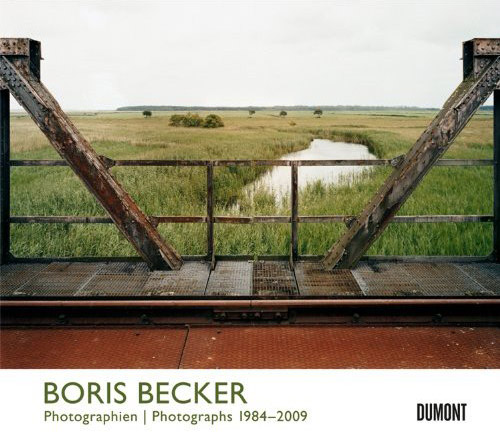Review: Boris Becker: Photographs 1984-2009

First things first. No, this is not the former tennis player Boris Becker. This is the photographer Boris Becker. Of course, you wouldn’t necessarily know that if you used Google, because not only is there almost no way around the tennis player, there also is almost no information to be found about the photographer. In particular, I managed to find a single photo from the one series that, I think, is by far Becker’s best. In fact, the main reason why I got excited when I heard there was going to be a book about his work. (more, updated below)
Becker is a product of the Düsseldorf photography school, and you don’t have to be a rocket scientist to see that. Becker’s first major body of work follows his teachers’ photography very closely. It’s a typology of German World War II air raid shelters (Hochbunker). I will admit that as much as I appreciate the contribution the Bechers have made to contemporary photography, the typologies of gas tanks, cooling towers, etc. leave me, well, fairly cool. Mind you, they are a stunning achievement, but I’m just not interested enough in these objects. If someone gave me a bunch of these photos, I wouldn’t hang them in my house because I wouldn’t want to look at them every day (but then again, I have an assorted collection of paint-by-number Jesuses and clowns in my house, so my home decorating skills might not be a good benchmark).
Enters Boris Becker. He took his teachers’ approach and traveled across Germany to take Becher style photographs of World War II air raid shelters. More precisely he photographed those buildings that had been custom-built to serve as such (the majority of Germans hunkered down in their basements when the bombs fell), while often also serving as flak towers. As the German word indicates, a Hochbunker is a building above ground, which, of course, isn’t necessarily the best place to put a shelter - unless, of course, you provide it with walls that are massive. So they were almost literally indestructible huge monstrosities, for the most part made out of concrete. This is what one looks like, here is another one.
So just like in the case of Bechers’ buildings there is no use any longer for the Hochbunker, but unlike the gas tanks or cooling towers, the air-raid shelters were next to impossible to remove - which adds more than just one twist to the whole story. The series itself comes in two parts, the first one in b/w, following the Becher typologies very closely, the second one in colour. That’s where it really gets interesting. Many of these shelters had been painted over, to make them at least visually less revolting. Some, it seems, even had been converted for other use (I remember very vaguely that when I was very little, one of the Hochbunker in my home town was used to sell carpets; I have a very faint memory of being inside one of those buildings). The colour part of the Hochbunker series is where Becker moves away from his teachers a bit, and for me, it’s the best typology ever produced. I can’t look at a bunch of gas tanks and feel intrigued (sorry, it’s just not happening), but looking at those air-raid shelters, and seeing them embedded in a modern city has my imagination going every time.
I have been unable to locate the Hochbunker series online, but Boris Becker: Photographs 1984-2009 presents it to you in all its glory. Unfortunately, I don’t think the rest of Becker’s work manages to hold up to this very strong beginning. There is a series about houses, which comes close, but the further you progress into the book, the more forgettable the photography… Of course, all the work is very, very well done, but Becker’s most recent work really just leaves me cold.
So the bottom line is that if you love typologies, you definitely need to buy Boris Becker: Photographs 1984-2009 because of the Hochbunker series. If you hate typologies, you should have a look at the book to see a typology that’s not just some sort of technical exercise or a study of industrial complexes.
Boris Becker: Photographs 1984-2009, photography by Boris Becker, with essays by Siegfried Gohr and Gabriele Conrath-Scholl, 280 pages, Dumont, 2010
Update: Given there is just nothing online, I made a little video, flipping through the book. It’s all quickly improvised, no editing, etc., but it might give you a good idea of the book.
Another update: Turns out there is a lot online, you just have to know where (and maybe how?) to look. Boris Becker has a website, and there are lots of images. Kudos to Christian Gieraths for the update!